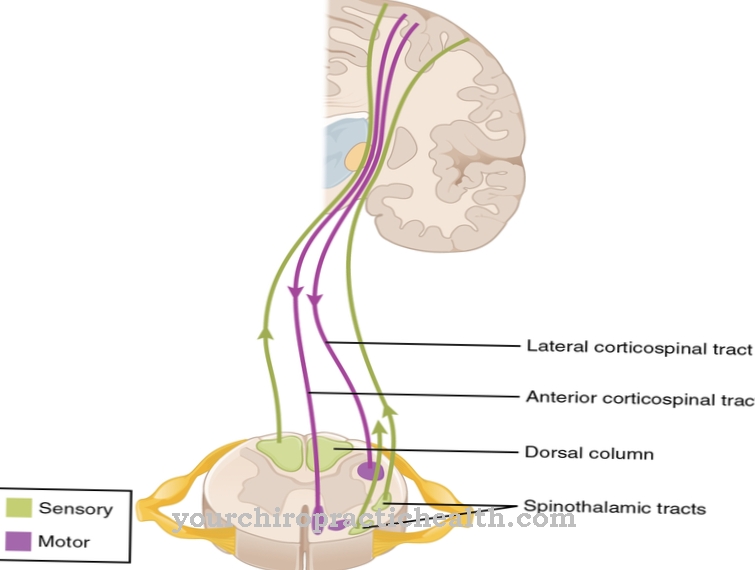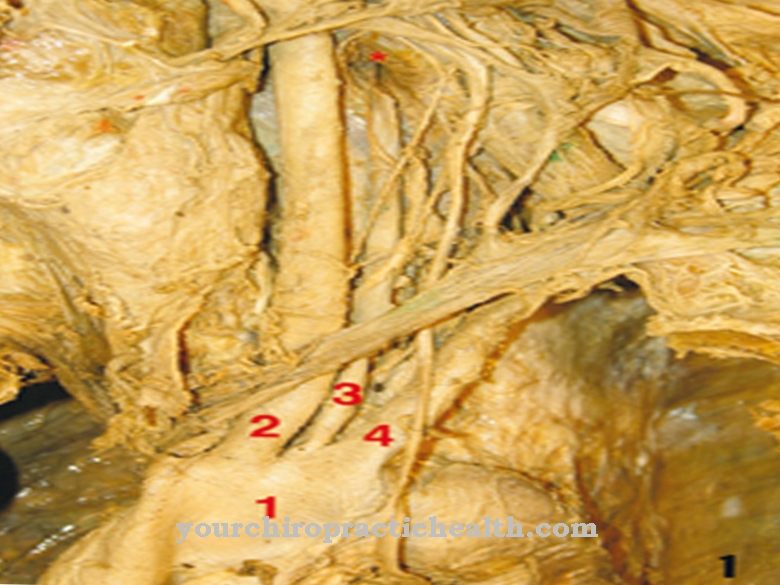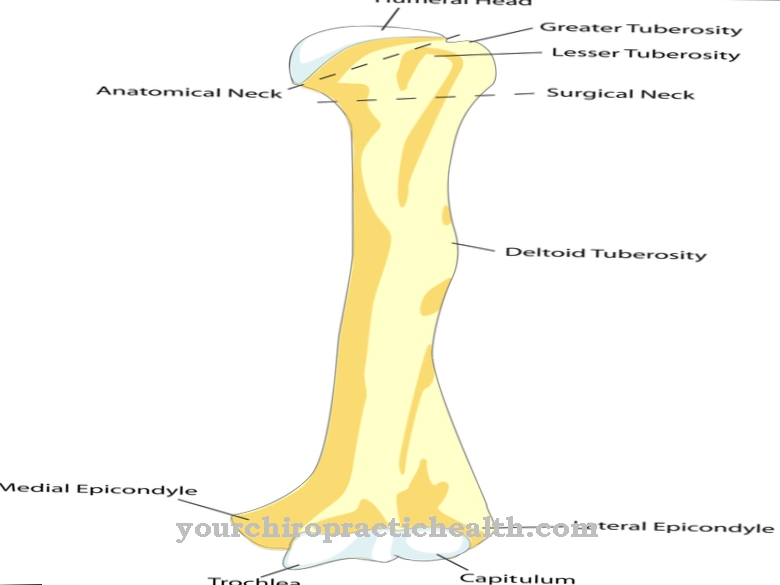Glial cells are located in the nervous system and are structurally and functionally separated from the nerve cells. According to more recent findings, they play an important role in information processing in the brain and in the entire nervous system. Many neurological diseases are due to pathological changes in glial cells.
What are glial cells?
In addition to nerve cells, glial cells are involved in the structure of the nervous system. They embody many different cell types that are structurally and functionally distinguishable from one another. Rudolf Virchow, the discoverer of the glial cells, saw them as a kind of glue to hold the nerve cells together in the nerve tissue. Therefore he gave them the name glial cells, whereby the root word "Glia" is derived from the Greek word "gliokytoi" for glue.
Until recently, their importance for the functioning of the nervous system was underestimated. According to recent research results, the glial cells intervene very actively in information processing. Humans have about ten times more glial cells than nerve cells. It even turned out that the ratio of glial cells to nerve cells is crucial for the speed of nerve stimulus transmission and thus also the thought processes. The more glial cells there are, the faster the information processing.
Anatomy & structure
Glial cells can be roughly divided into three functionally and structurally different cell types. So-called astrocytes form the main part of the brain. The brain consists of around 80 percent astrocytes. These cells have a star-shaped structure and are preferably located at the contact points (synapses) of the nerve cells.
Another group of glial cells are the oligodendrocytes. They surround the axons (nerve processes) that connect the individual nerve cells (neurons) with one another. Astrocytes and oligodendrocytes are also known as macroglial cells. In addition to the macroglial cells, there are also the microglial cells. They are everywhere in the brain. While the macroglial cells originate from the ectodermal germ layer (outer layer of the embryoblast), the microglial cells originate from the mesoderm. The so-called Schwann cells play a role in the peripheral nervous system.
Schwann cells are also of ectodermal origin and fulfill similar functions as the oligodendrocytes in the brain. Here, too, they surround the axons and supply them. There are also some special forms. The so-called Müller supporting cells are the astrocytes of the retina. There are also pituitary cells, which represent the glial cells of the posterior lobe of the pituitary gland. The HHL is made up of 25-30 percent pituitary cells. Their function has not yet been fully clarified.
Function & tasks
Overall, the glial cells fulfill a variety of functions. The astrocytes or astroglia represent the majority of the glial cells present in the nervous system. They play a major role in the regulation of fluids in the brain. They also ensure that the potassium balance is maintained. The potassium ions released during the transmission of stimuli are absorbed by the astrocytes, while at the same time regulating the extracellular pH balance in the brain.
Astrocytes are of particular importance when it comes to participating in cerebral information processing. They contain the neurotransmitter glutamate in their vesicles, which when released activates neighboring neurons. The astrocytes ensure that the signals travel long distances in the body and at the same time are further processed for other neurons. So you differentiate the meaning of individual pieces of information. In addition to moderating the information, they also determine where it should be forwarded to. Thus they are responsible for the permanent construction and restructuring of the information network in the brain. Without astrocytes, transmitting the information would be very difficult.
The learning process and thus the development of intelligence is only possible through the complex cooperation of astrocytes and neurons. The oligodendrocytes in turn form the myelin around the nerve cords. The more certain information strands are developed, the thicker the nerve strands and the more myelin is required. The third type of glial cells, the microglial cells, react in a similar way to the macrophages of the immune system to pathogens, toxins and dead body cells in the brain. Since no antibodies can get into the brain through the blood-brain barrier, this task is taken over by the microglial cells. The microglial cells are divided into resting and active cells.
The resting cells monitor the processes in their environment. In the event of disturbances due to injuries or infections, they become freely mobile, migrate like amoebas to the appropriate location and begin their defense and clean-up function. Overall, it is becoming increasingly clear that glial cells not only have support functions, but are also largely responsible for the performance of the brain and the nervous system.
Diseases
In this context, there is also a growing awareness of the importance of glial cells for health. In many neurological diseases, noticeable changes are observed within the glial cells. For example, schizophrenia often breaks out in adolescence, when not all axons are coated with myelin.
Very few oligodendrocytes, which are responsible for the myelin build-up, are detected in the corresponding patients. It is possible that some of the genes that are important for myelin structure have been changed. In multiple sclerosis, the myelin sheath is destroyed in many cases. The exposed nerve processes can no longer transmit signals and the severed neurons die.
Hereditary leukodystrophy is a progressive destruction of the white matter of the nervous system. The myelin surrounding the nerves is broken down. The result is a massive impairment of the nerves. The affected people suffer from motor and other neurological disorders. Finally, some brain tumors originate in the uncontrolled growth of glial cells.













.jpg)

.jpg)
.jpg)











.jpg)